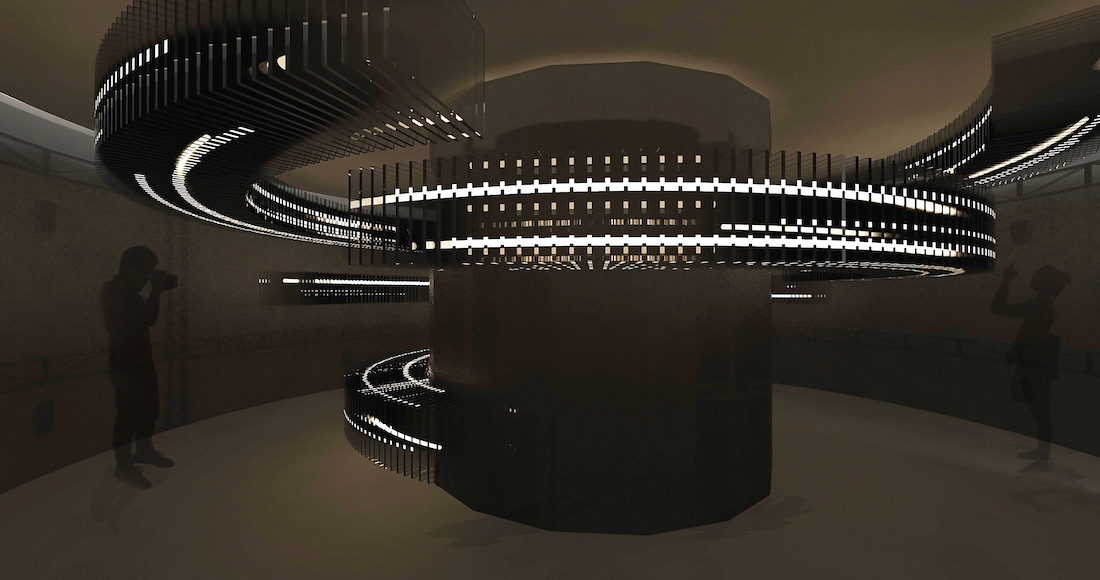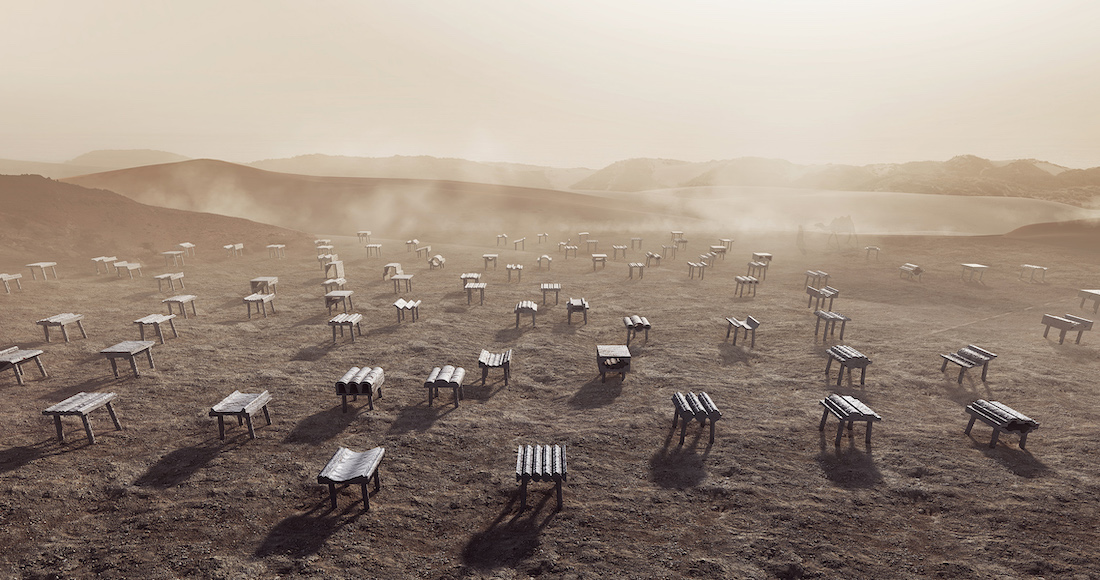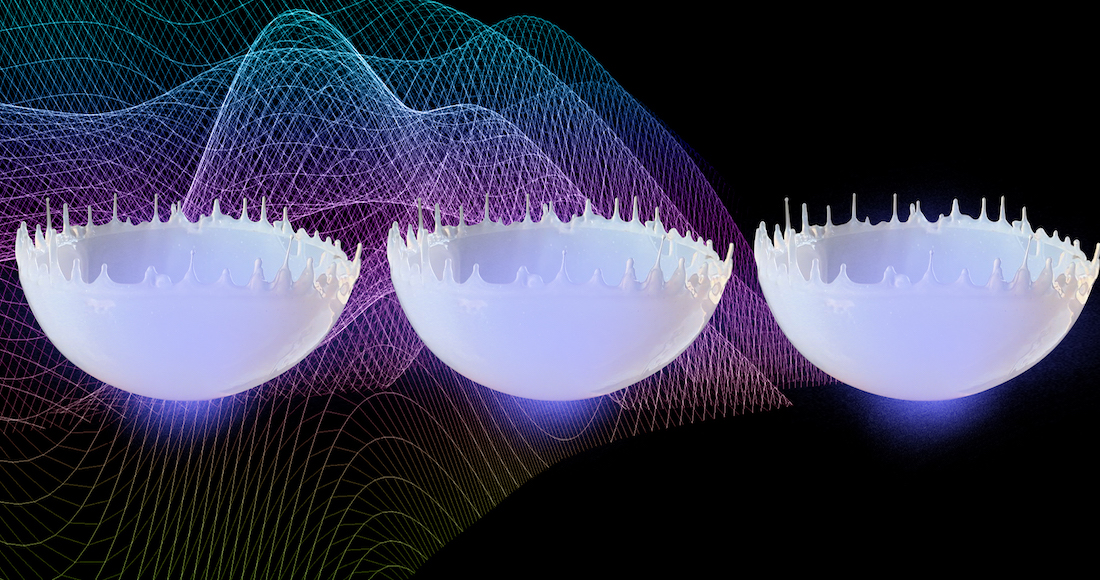Copyright © 2025 Motivate Media Group. All rights reserved.
Exhibiting pride at Abwab
The 4th edition features 5 pavilions designed by Architecture + Other Things.

Abwab is an open door to the region’s top creative talent via 5 captivating pavilions.. This year, Dubai Design Week stages its fourth edition, designed by Architecture + Other Things. Composed of natural materials including fallen twigs and timber coated in recycled newspaper pulp, these materials will come to life under the theme ‘Between the Lines’, commissioned designers from five communities: Amman, Beirut, Dubai, Eastern Provinces of KSA, together with Pavilion Partner Ithra, and Kuwait City.
The Amman Pavilion
Amman (shown above) is synonymous with the ‘duwar’, roundabout in Arabic, eight of which function as urban landmarks. Aside from its role in urban settings, duwar is a representation of a continuous circular motion of successive events that are always alternating between chaos and order. Offering a glimpse into the multi-faceted city, the Amman Pavilion sources soundscapes from various streets in the city capturing the dynamic narratives of the city’s diverse residents to communicate nuances of the city’s urban fabric. Designed by Hashem Joucka & Basel Naouri.

Abwab Kuwait City
Kuwait City Pavilion
Desert Cast is an exploration of locally available materials and fabrication methods, to reach a local ‘maker’ identity. Gypsum-moulding, for example, is a method used to easily reproduce classical Greco-Roman architectural motifs. Most of Kuwait’s decorated mansions and modest villas employ this affordable decorating technique. Although methodically simple, the end-results are formally elaborate and considered “Oriental”. Consequently, the city’s fabric has become filled with collaged iterations of classical architecture found in European cities.
Addressing a lack of local identity arising from a desire to recreate Classicism in Kuwait, different Kuwaiti production methods were explored and reconstituted, resulting in the marriage of gypsum-moulding and sand-casting with foam as a mediator. Extruded gypsum profiles were cut in foam by the foundry’s master craftsmen, and used to cast complete metal objects. The Kuwait Pavilion attempts to shed light on the accessibility to master fabricators’ craft by showcasing new forms of functional objects made through lost-foam casting. Designed by Jassim Al Nashmi, Kawther Al Saffar and Ricardas Blazukas.

Abwab, Concept for the Eastern Provinces of KSA.
The Eastern Provinces of the KSA
Their visionary pavilion features an immersive installation honoring the tradition of pearl diving, known to have contributed heavily to the economy of the Eastern Coast of the Arabian Peninsula. The project engages visitors through an experience of sound, time, and the jubilation of locating a pearl. Soundwaves are the essence, sourced from the song El Yamal, a song chanted to release energy to keep the divers motivated. The sea in the song is an analogy for the varied emotional states that the “بحار”* endures. The energy of the song echoes throughout the space causing the vessels to vibrate and bring life to a song now long gone, as though to bring past into present. The structural elements within the space are the direct representation of the audio waves of El Yamal, transforming the song into a solid state, to carry the song into the future. Designed by Lina Saleh, Ahaad Alamoudi & Sana Alabdulwahed.
*men of the sea
Dubai
Divided by three pockets of time, Thulathi: Threefold is an expression of past, present and future brought together through investigations of sound, image, and video sourced from archival vaults and personal recordings. The space is defined by a protruding triangular ‘parasite’ to break the natural form of the pavilion. Each corner of the triangle opens slightly through apertures revealing theatres of video projections and silhouette cutouts. The theatres can only be viewed by standing on the outside the pavilion and peering through the apertures. Inside, visitors of the Dubai Pavilion are invited to experience the intersection of time through sound alone, as though standing within a version of the city itself. Designed by Saeed Al Madani and Hind Bind Demaithan.
Beirut
Using language as material, the oral archive provides a fresh perspective on how the city can be experienced, perceived and engaged. Designed by Team: Tamara Barrage & David Habchy.
[euhhh] ‘euhhh’
In linguistics, a filler is a sound or word spoken in a conversation by one participant to signal others a pause or a transition.
[halla2] ‘now’
In the context of busy cosmopolitan lifestyles, Beirutis punctuate their conversations with fillers to look for a word while switching languages, sharpening a thought, or reacting to daily stimuli. As a socially accepted buffer time, fillers play the role of sonic and oral translations of thought to speech. They materialize impressions into sounds, rather than meanings.
[enno] ‘meaning’
Re-contextualizing cultural and idiosyncratic oral patterns, the project aims to amplify the presence of fillers for visitors to experience them instead through other senses. Carefully crafted sculptural objects are formed by recorded conversations, and textured by the frequency and volume of sounds. Using language as material, the oral archive of Beirut provides a fresh perspective on how the city can be experienced, perceived and engaged with.
[fa] ‘so’
The Beirut Pavilion invites the audience to explore these words in a constructed sensorial environment.
The Latest
Inside The Charleston
A tribute to Galle Fort’s complex heritage, The Charleston blends Art Deco elegance with Sri Lankan artistry and Bawa-infused modernism
Design Take: Buddha Bar
We unveil the story behind the iconic design of the much-loved Buddha Bar in Grosvenor House.
A Layered Narrative
An Edwardian home in London becomes a serene gallery of culture, craft and contemporary design
A Brand Symphony
Kader Mithani, CEO of Casamia, and Gian Luca Gessi, CEO of Gessi, reflect on the partnership between the two brands
The Art of Wellness
Kintsugi in Abu Dhabi, situated in a seven-storey villa, offers the ultimate zen retreat
Design Take: Inside the Royal Suite at Jumeirah Al Naseem
With sweeping views of the ocean and Burj Al Arab, this two bedroom royal suite offers a lush stay.
Elevated Living
Designed by La Bottega Interiors, this penthouse at the Delano Dubai echoes soft minimalism
Quiet Luxury
Studio SuCo transforms a villa in Dubailand into a refined home
Contrasting Textures
Located in Al Barari and designed by BONE Studio, this home provides both openness and intimacy through the unique use of materials
Stillness, Form and Function
Yasmin Farahmandy of Y Design Interior has designed a home for a creative from the film industry
From Private to Public
How ELE Interior is reshaping hospitality and commercial spaces around the world – while staying unmistakably itself
A collaborative design journey
A Life By Design (ALBD) Group and Condor Developers have collaborated on some standout spaces in Dubai
















